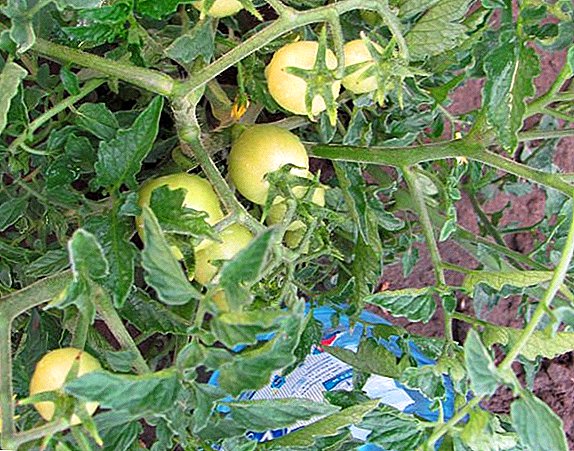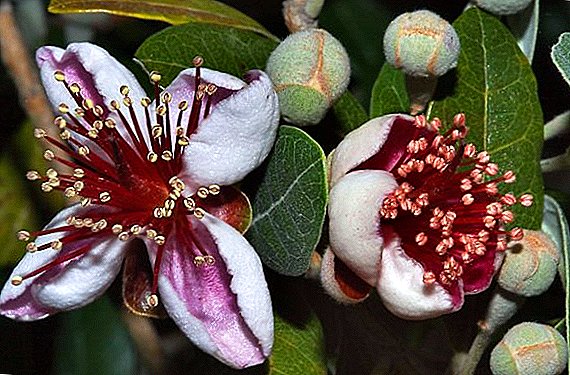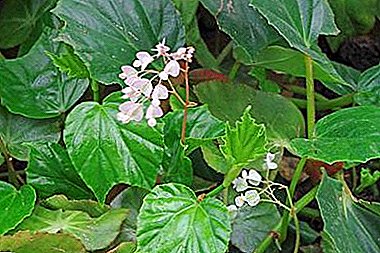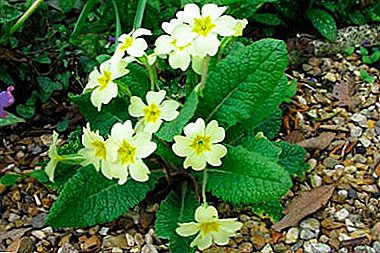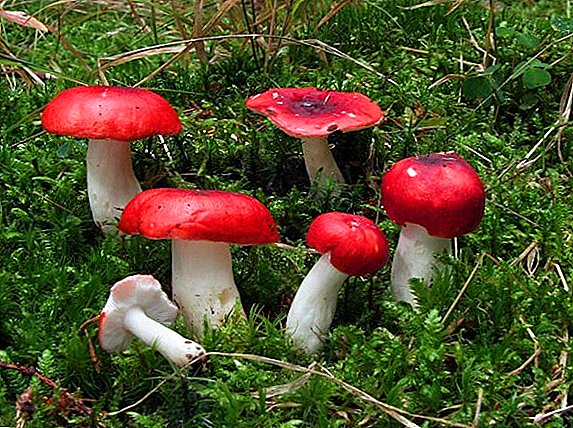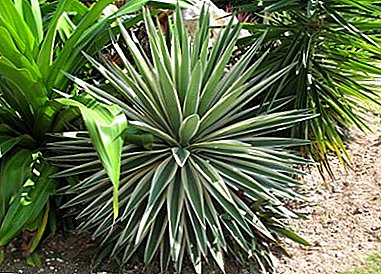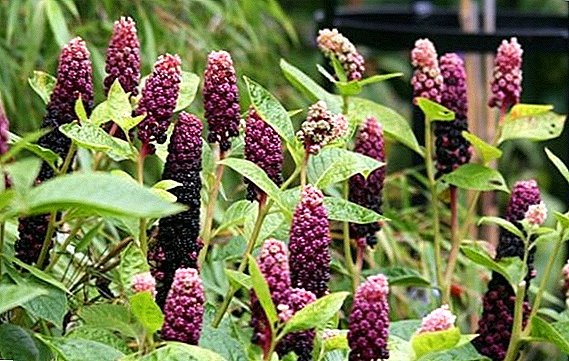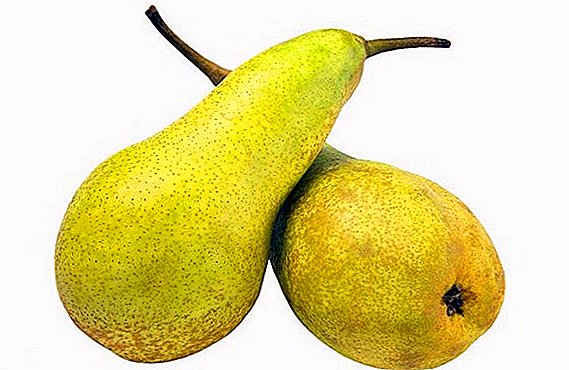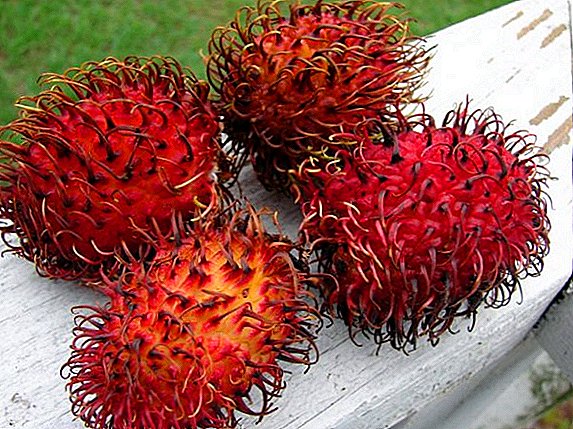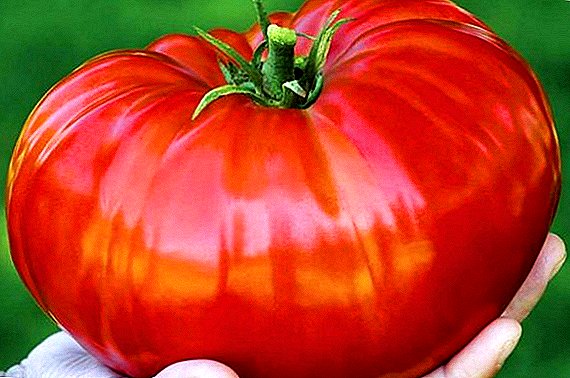 At present, breeders derived many varieties of tomatoes, each of which has its own advantages and disadvantages. They are distinguished by the height of the bushes, the ripening time, the taste and size of the fruit.
At present, breeders derived many varieties of tomatoes, each of which has its own advantages and disadvantages. They are distinguished by the height of the bushes, the ripening time, the taste and size of the fruit.
Let us discuss the variety of tomatoes "Siberian giant", registered in 2014 by Russian breeders, what advantages it has, how it looks and what fruits it produces, and how to achieve the highest yield.
Characteristics and description of the variety
In the name of the variety, the breeders who created it displayed two features at once - the ability to grow in cool regions and bear large fruits. These tomatoes are grown in greenhouses, greenhouses (in the eastern, western regions, in the Urals, the Far East), as well as in open ground in areas with a warm climate (central and southern regions). Tomatoes are formed in an unusual shape.
Bush
Shrubs "Siberian giant" grow tall - up to two meters in height. Individual copies can reach a height of 2.2 meters. Their stem is dense. Leaves are regular in shape and size, no different from other varieties. The bushes, which are formed from one or two stems and with a small amount of foliage, are characterized by the highest yield.
Did you know? The largest tomato in the world was grown thanks to the efforts of a resident of the United States, Dan McCoy. He weighed 3.8 kg. The record was recorded in 2014. And the largest tomato tree managed to cultivate the Japanese. It was the height of a three-story building.

Fruit
Tomatoes in the "Siberian giant" are formed large, flat-rounded shape. Their skin is pink or bright red. The maximum length of one fruit reaches 10 cm. The average weight varies from 0.4 to 0.75 kg. Record holders by weight reach 1.2 kg.
On one brush, as a rule, two to three fruits are formed. Tomatoes in the "Siberian giant" are fleshy, sugar. To taste sweet and very juicy. Publish appetizing flavor. In the middle they have five to seven cameras. Fruits contain a small amount of water.
The amount of dry matter - from three to five percent. They are characterized by long-term storage and good transportability.
We advise you to familiarize yourself with the nuances of growing such varieties of tomatoes as "Carrot", "Pink Spam", "Bull's Heart", "Sugar Pudovik", "Cardinal", "Makhitos", "Golden Domes", "Mikado Pink", "Krasnobai" , "Bokele F1", "Malachite Box", "Doll Masha F1", "Klebosolny", "Monomakh's Hat".

Ripening and yield
This variety is characterized by medium ripeness - appetizing tomatoes on the bushes appear three months after sowing seeds.
The yield of the "Siberian giant" is high. With one bush per season with proper care it is possible to remove five to six kilograms of tomatoes. From one square meter - up to 12-15 kilograms.
Purpose
Tomatoes "Siberian giant" contain many vitamins and minerals. In cooking, they are used for fresh consumption in salads. They are also suitable for canning. Very tasty when canned in their own juice. For the manufacture of tomato juice are not suitable.
Familiarize yourself with recipes for making delicious dried, salted tomatoes, as well as tomatoes in their own juice.
Recently, an interesting way to eat tomatoes is to dry them. This method is good because it allows you to save the maximum amount of valuable substances in the vegetable and save it for a long time for cooking in the winter. 
Did you know? For a long time, Americans and Europeans considered tomato fruits to be inedible and even poisonous. In Europe, they were cultivated only for ornamental purposes, they decorated gardens and greenhouses. American Robert Robert Gibbon Johnson succeeded in refuting this error in 1820, who publicly ate a bucket of tomatoes.
Growing conditions
The greatest yield from the "Siberian giant" can be achieved when grown in a greenhouse or greenhouse. However, wherever you plan to plant this variety, you need to do this with the help of seedlings.
A prerequisite for growing plants is good lighting. In the evening or in cloudy weather, you will need to install an additional light source.
The temperature in the greenhouse for growing plants should be at + 19 ... +22 ° C during the day and + 16-18 ° C at night. In greenhouse conditions will require frequent airing. 
Landing rules
From the very beginning, planting should be carried out correctly, since mistakes made at the stage of sowing seeds will inevitably lead to a deterioration of the fruiting.
Seeds for seedlings sown:
- in the southern regions - at the end of February - in March;
- in the central - from the middle to the end of March;
- in the north - from the beginning to the middle of April.
Experienced and vigilant gardeners usually choose days that are favorable according to the lunar calendar. Soil for seedlings is better to buy in the store. Before planting, it should be moistened and held in the room for 12 hours.
Important! Sowing time for seedlings can be calculated by counting 55-65 days from the last spring frosts.
The soil is placed in the capacity for planting seeds, it makes indentations with a depth of 1 cm. The distance between the grooves is 2-3 cm. Two or three seeds should be planted in each cavity and covered with soil. From above the container should be covered with a film or glass.
Landings are placed on the windowsill, preferably on the south side, where enough light penetrates. If the light is not enough, you will need to install additional lighting. There is an opinion that the first two or three days the light should not be switched off at all for the speedy germination.
Further care of the seedlings will consist in daily ventilation and humidification. The temperature at the germination stage should be maintained at + 20 ... + 25 ° C. If the temperature is lower, then the shoots should be expected later. The first shoots appear after three to four days. A week later, you can remove the shelter.
In the phase of the first true leaves (about a week after sowing) plantings dive in different containers, first with a volume of 200 ml. They will need to be sprayed twice a day to maintain a high level of humidity.  The optimum temperature for seedlings is + 18 ... + 25 ° C during the day and + 12 ... + 15 ° C at night. If the temperature allows, they can be taken out to fresh air, for example, to the balcony. Schooling to the sun should start with five minutes a day.
The optimum temperature for seedlings is + 18 ... + 25 ° C during the day and + 12 ... + 15 ° C at night. If the temperature allows, they can be taken out to fresh air, for example, to the balcony. Schooling to the sun should start with five minutes a day.
We recommend to read when and how to pick the tomatoes after shoots.
Seedlings will need to feed two or three times with mineral fertilizers. Some gardeners produce a repeated dive in the capacity of 400 ml. In about 1.5 months (that is, in April-May), the seedlings will be ready for disembarking for permanent residence - in a greenhouse or open ground.
In the greenhouse and in the open ground, seedlings are planted on a cool overcast day. Between bushes should observe a distance of 40-60 cm. Planted planting 40 x 60 or 50 x 60 cm.
Important! Please note that seedlings from which you can expect an excellent harvest, should have thick stems, large leaves, a well-developed root system and buds.
The stems are buried a couple of centimeters into the soil. After planting, the plants are watered abundantly with warm water. Plants placed in open ground must first be covered with foil.
Care Tips
The main activities for the care of tomatoes will be:
- watering;
- fertilizer;
- garter;
- loosening;
- hilling;
- weed removal;
- pasynkovanie.
After planting and subsequent watering, the next time the plant is moistened after 12 days. Before flowering four liters of water per 1 square meter will be required. m. In the period of release of flowers and the appearance of the ovary, you need to pour out 12 liters per 1 square. m  Too much waterlogging should not be allowed, it is fraught with the development of fungal diseases. Water for irrigation should be used only warm. And you need to water the tomatoes in the evening, after sunset. At the same time, care should be taken to prevent moisture from falling on the leaves and stems.
Too much waterlogging should not be allowed, it is fraught with the development of fungal diseases. Water for irrigation should be used only warm. And you need to water the tomatoes in the evening, after sunset. At the same time, care should be taken to prevent moisture from falling on the leaves and stems.
We should not forget about spraying - it is better to combine them with foliar dressing and antifungal treatments. The land should be loosened regularly, which should be combined with hilling. This should be done very carefully so as not to damage the root system.
As we have already noted, the bushes of tomatoes grow quite high, so as soon as they reach a height of 0.5 m, they should be tied to a support.
Since the bushes give a dense crown, which can interfere with the ripening of fruits, it is necessary to periodically thin out it, and remove the lower leaves completely. Be sure to get rid of stepchildren growing in the axils of the leaves, until they reach 3 cm. This is done either by hand or with scissors. After the appearance of peduncles you need to ensure that they are not too much. At the end of the growing season, nipping points are required.
Fertilizers begin to produce, after the formation of the first ovary. For them, the best fit complex mineral and organic fertilizers. This tomato is very well perceived green fertilizers.
Another important care activity is regular weeding and weed removal. Weed grass is best removed from the root. Fruiting occurs in July and August. Fruits will need to be harvested as they ripen.
Among the characteristics of the variety you need to remember about resistance to diseases and parasites. But still not to everyone. "Siberian giant" is attacked by a spider mite and whitefly. The presence of the first is evidenced by the drying of the leaves and the cobweb on the bushes.
The fight against ticks should be started as early as possible, since this harmful insect drinks the life-giving juices from the plant and thus causes irreparable damage to its productivity.  It should start with repeated treatments with soapy water, bleach, medical alcohol, henbane infusion and effective agrotechnical methods.
It should start with repeated treatments with soapy water, bleach, medical alcohol, henbane infusion and effective agrotechnical methods.
If these methods did not give any results, then go to a stronger method - the use of an insecticide permitted for tomatoes, for example, Plank Pin, Aktellika, Fitoverma, Aktar, Fufanon.
It will be useful for you to read about what are the diseases of tomatoes, as well as what methods to combat them.
The fact that the tomatoes were attacked by the whitefly, will tell the presence in the immediate vicinity of small white flying insects and a white coating on the leaves. In the greenhouses, the parasite is fought with adhesive tapes, attracted by light.
Garlic solution, soap solution, dandelion infusion, yarrow, copper sulfate solution, lime help to get rid of the larvae. Of the chemical drugs used "Aktellik", "Aktar", "Rovikurt", "Pegasus" and others.
From diseases "Siberian giant" can affect brown spot. To prevent infection by this disease, when grown in greenhouses, it is necessary to observe the conditions of humidity and light conditions.  For the treatment used garlic solution, preparations "Barrier", "Barrier".
For the treatment used garlic solution, preparations "Barrier", "Barrier".
Did you know? Botanists consider tomato a berry. From the point of view of technological taxonomy and method of cultivation - this is a vegetable. But in the European Union it is considered to be its fruit.
Of course, the variety "Siberian giant" deserves the attention of gardeners. Its advantages include high yield, unpretentiousness in care, undemanding to the composition of the soil, resistance to diseases and parasites, the possibility of cultivation in cold conditions, excellent quality of large fruits.
The disadvantages are much less - among them: the bushes are too high, which necessarily require support, the narrow scope of use, in particular, the impossibility of making juice from them.


